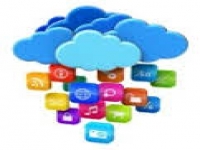When Google Apps arrived in 2006, it stood on the cutting edge of Web-hosted email and collaboration suites for businesses, a bold pioneer clearing a path in the new, wild frontier of enterprise cloud computing.
Seven years later, complacency has diluted that innovative spirit, and Google Apps now trails competing suites from IBM, Cisco and Microsoft in areas like enterprise social networking (ESN) and unified communications (UC).
Although Google improves Apps continually, the suite's main draw remains its Gmail component, as has been the case from the beginning. But is cloud email still enough to attract prospective customers and retain existing ones? Is Google leaving Apps vulnerable to rivals by taking its time boosting its ESN and UC capabilities?
One company eyes rival Office 365
At healthcare company Schumacher Group, Google Apps is at risk of losing its place to Microsoft's Office 365. The Lafayette, Louisiana, company uses Apps to provide email to about 3,000 independent contractor doctors and Microsoft Exchange on premises for its full-time employees.
After relying on Apps for about four years, Schumacher Group is taking a close look at Office 365, which comes with online versions of Exchange, SharePoint, Lync and Office, said Schumacher CIO Douglas Menefee.
"We're evaluating Office 365 and Google Apps, and discussing the strengths and weaknesses of both products," he said. "Microsoft has made great strides with Office 365. The sleeping giant awoke two years ago."
Menefee was referring to the launch of Office 365 in 2011, when Microsoft finally released a cloud email and collaboration suite that was comparable to Google Apps. "We have seen a major shift in the maturity of Microsoft's cloud-based products," he said. "They seem to be gaining a lot of traction."
Currently, Schumacher Group uses an on-premises Lync server for unified communications, and Salesforce.com's Chatter for ESN.
Customers want more
Even new customers adopting Apps with unbridled enthusiasm want Google to know they expect it to continue developing the suite in innovative ways.
That's the case at Whirlpool, the home appliances giant, which recently announced plans to migrate from an IBM Lotus Notes system to Google Apps. Getting cloud email and other basic productivity functions wasn't what tilted the scales in favor of Apps.
"Email and calendaring are commodity services," said Whirlpool CIO Michael Heim. "You don't do this kind of implementation just for email and calendaring."
In fact, Whirlpool, which will deploy Google Apps to about 30,000 employees worldwide, hopes to reduce its reliance on email. "If we could make email go away, we would, because there are better ways to work, and that's what's exciting for us," he said.
Whirlpool wants to push its employees to communicate with video conferencing, to share and co-edit documents in real time and to exchange ideas in internal online communities.
Thus, he's excited about the real-time collaboration capabilities in the suite's Docs office productivity apps, and he's interested in the new Hangouts UC tool in the Google+ consumer social networking app.
When Google Apps arrived in 2006, it stood on the cutting edge of Web-hosted email and collaboration suites for businesses, a bold pioneer clearing a path in the new, wild frontier of enterprise cloud computing.

